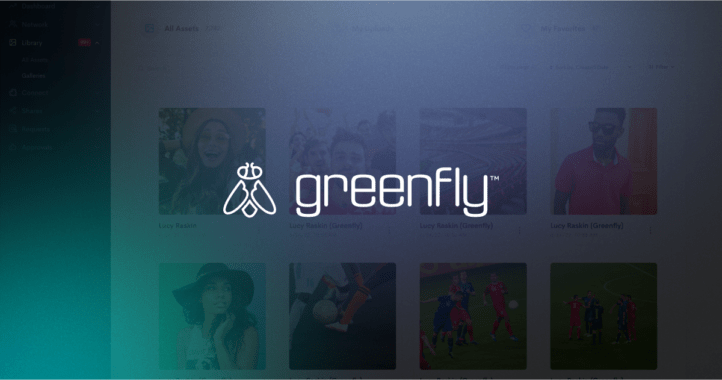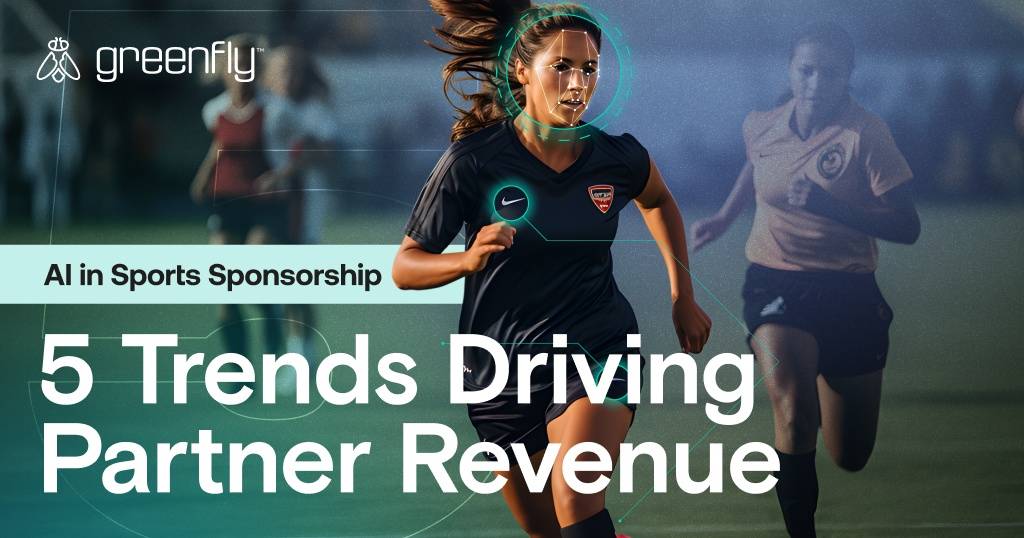Before getting into Opendorse pricing, you should understand that Opendorse is an athlete marketing platform. If you want to help your athletes find sponsors so they can make some endorsement money that their sports agent can’t find for them, this is a good solution. That’s where this company gets its name – enDORSEments.
This is fine for minor leagues, but if you’re a pro sports organization, your athletes are probably better served with individual endorsement deals arranged by professionals.
You can find some information on Opendorse pricing listed publicly, but there is a lot more to know about Opendorse prices and what the platform can/cannot do. In their own words, Opendorse is an athlete marketing platform, a marketplace for sponsors, and also a social media publishing tool. It’s hard to do three things really well. There are much better systems out there for social media content distribution, and Opendorse doesn’t do things that you probably do want, like collecting content from athletes, enabling fan participation, and helping the team or league increase engagement through their athletes, instead of just helping them get their own endorsements.
Colleges, sports leagues, and sports sponsors use this tool to help their athletes publish content ‘suggestions’ to social media. But their customers have needs that go well beyond this use case. Their platform has evolved to try and meet those needs, so it’s informative to explore what Opendorse’s prices for enterprises entail. This article will give deep insight into the Opendorse product and its prices for colleges and other customers.

Opendorse Pricing Basics
Opendorse has a price list that shows three tiers, priced on a per-user basis.
These are Starter, Pro, and All-In packages. Their prices also vary for three client categories: Opendorse for Sports, Opendorse for Brands, and Opendorse for Business.
We’ll focus on Opendorse for sports because we haven’t seen any sales traction in those other categories.
The prices Opendorse lists publicly are for their Starter tier, a tier which will fall short for most based on needs. The Starter price tier for Opendorse for Sports is $499 per month, but that tier is quite limiting. With such tiered pricing for Opendorse for Sports, it’s important to know which parts vary across the tiers and which are consistent. And which features listed are limited across the board.
Features That Are Consistent Across Opendorse Price Tiers
There are a lot of product features on Opendorse’s price list that they provide across tiers. The important ones to know are ‘On-Demand,’ performance analytics, and an unlimited number of end-users (for sports customers). Opendorse ‘On-Demand’ is one of the features they introduced to help customers share more than a single photo or video to publish. They call these (collections of multiple assets) “collections,” which are folders that admins can manually curate for users.
The performance analytics they provide seem decent but come with caveats. To get analytics requires users to both connect their social profiles to Opendorse and post only through their platform. Finally, the unlimited number of end-users is helpful, but make note that the number of admins and ‘rosters’ are among the features that vary across Opendorse’s prices.
Features That Are Not Consistent Across Price Tiers
The most obvious feature to note that varies in Opendorse’s price tiers is the number of content suggestions. These are the automated posts that go on social media after an athlete taps to approve the pre-written post. The Starter tier price nets a customer up to 25 content suggestions per month. (These maximum suggestions allowed are lower for Opendorse for Brands and Opendorse for Business). The Pro and All-In tiers allow for 100 content suggestions in the Pro tier and unlimited in the All-In tier. Opendorse does not list pricing for any option besides Starter, though.
The number of seats and rosters are surprisingly limited across Opendorse’s prices for enterprises. The number of seats for the All-In tier only goes up to three, and it’s fewer for the other price levels. That means Starter users can only have one person with access to manage the platform and even All-In users can only have three. The number of rosters is also limited, with only one allowed for Starter and Pro clients, and a max of five for All-In clients. There is a ‘groups’ feature within a roster that alleviates this concern for small organizations. But for organizations with multiple departments or properties, even Opendorse’s top price level may not suffice.
One more important variable feature with Opendorse’s pricing is media integrations. Opendorse can do a very basic import from services like PhotoShelter and Getty Images (we’ll get more into how this works later). But media integrations are not available in the Starter tier, so the price is not published for media integrations.
Finally, the Starter price for Opendorse also does not include an account manager nor does it include a private network. All the packages include setup assistance, but anyone with a Starter package will not have help beyond that. This is a notable variable feature to mark and an essential part of success with a SaaS platform.So with Starter, you’re on your own. And only customers in the All-In tier have a private network, according to Opendorse’s pricing.

Opendorse for NIL Endorsements: Buyer Beware
This is exceptionally important when it comes to name, image and likeness deals (NIL) for college athletes. Regardless of how much an athletic department wants to promote NIL programs, we know that the NCAA explicitly prohibits colleges and universities from providing direct endorsements for their players. They need to be neutral and cannot arrange NIL endorsements on their behalf. That is a conflict of interest for OpenDorse. Colleges can (and should!) provide players with videos, photos and social media posts to help them boost their social profiles and their personal brands. Greenfly is the right partner to help with that.
Having a system that’s built for social media teams is critically important in this context — universities need robust content exchange capabilities but cannot suggest that this will lead to athlete endorsement.
Alternatives to Opendorse
Greenfly — More Function, More Value
Forward-thinking and innovative organizations need something better than Opendorse. That’s why the biggest sports organizations in the world turn to Greenfly instead. Greenfly doesn’t offer an athlete marketplace or connect athletes with endorsement deals. Greenfly is the leading digital media collection and distribution platform. It’s not an alternative to an athlete endorsement or NIL program but is by far the best software for content collection and distribution for teams, leagues, and sports associations.
Greenfly’s prices are competitive with Opendorse. And Greenfly also offers many more capabilities and services than Opendorse when it comes to digital media, like photos and videos for distribution to athletes and social publishing.
Greenfly does not discriminate against customers with price tiers, offering the full power of its platform to all customers. This includes all of the social publishing that Opendorse enables, but also a lot more. And Greenfly enables large sports organizations, leagues and teams to collect content. In fact, Greenfly powers sophisticated live content creator programs to capture intimate moments at matches, games, tournaments, races and sports events of all types.
Greenfly also integrates with an extensive collection of integrations across visual media, production and cloud storage. Greenfly can import and house metadata, empowering organizations to automatically route photos and videos to personalized galleries for athletes. Greenfly also has built-in communication and administration tools in its platform, both desktop and a robust, proven mobile app for iOS and Android.
Greenfly does not place any limits on bandwidth, utilization, the number of assets or storage — all use is inclusive and included in the base platform price.
That’s why Greenfly is the platform of choice for professional leagues and teams, like Major League Baseball, the NBA, the NHL, World Surf League, and the Premier Lacrosse League, among many others. They choose to work with Greenfly because it fulfills every need to create, collect, move, distribute, and track all their content.
The Features Opendorse Promotes – but Does Not Price
Opendorse is often seen as the tool brands use to source and execute athlete endorsements. But a glance at Opendorse’s prices for enterprises do not reflect this use case. This is among the biggest misconceptions about Opendorse as a company and Opendorse’s pricing. Brands do use Opendorse to find athletes to work with. But the ‘Opendorse for Sports’ price structure does not include bringing sponsors to those sports customers.
There are additional features not included in Opendorse’s prices that are important to note that the company often talks about. Another notable absence from the Opendorse pricing is their athlete brand training services. The company calls the service “Opendorse Ready”. The cost does not appear on any price list for Opendorse, but reportedly costs nearly $250,000. This is important to keep in mind when evaluating Opendorse prices because it’s another example of something any prospective customer should know. This is a hefty price tag.
Lastly, the social media publishing and analytics that their price list plays up are also restrictive. Social media publishing is limited to just a few social networks. That’s it. This means organizations publishing on platforms like YouTube, TikTok, Snapchat, Weibo, and Pinterest, among others, will find their needs not met at any price level from Opendorse.
There is a similar limitation for the analytics Opendorse promotes. Their platform does deliver analytics, but it’s not comprehensive. Metrics are only provided for athletes that connect and verify their social media accounts through Opendorse. This is a huge potential security and privacy issue. Athletes generally do not want to provide their social media login info credentials to anyone. But that’s required by Opendorse analytics. This also means that athletes need to be comfortable giving their social media publishing capabilities to a third party.
Opendorse markets a lot of features and services that they do not include in their prices, and some functions don’t even work without complete social media permissions. So it’s important to keep that in mind when looking at Opendorse tools.
What the Opendorse Platform Cannot Do — At Any Price
There are a handful of essential services that Opendorse is not able to provide at any price point. Again, the publishing aspect of Opendorse is not nearly as developed, mature or used by customers as much as their core athlete marketplace and endorsement offerings.
You should now have a comprehensive understanding of what Opendorse’s prices do and do not include and what Opendorse does well. There are some important capabilities their publishing tool does not have, which may be a dealbreaker for some.
One feature Opendorse does include on its price list is ‘media integrations’. They only suggest PhotoShelter and Getty, however. This means that Opendorse does not have other integrations that are table stakes for a lot of organizations. Many organizations need integration into digital asset management tools beyond PhotoShelter, like cloud storage platforms (e.g. Google Drive, Box), and video production platforms (e,g. Grabyo, WSC Sports).
The absence of metadata for Opendorse at any price point is glaring. The lack of metadata renders users powerless to search and filter content in Opendorse’s backend and in its On-Demand collections. This also makes the organization of content in Opendorse a manual process. It’s particularly glaring if an organization is hoping to automate organization. This includes automatically personalized collections for each athlete on a team.
Opendorse is a one-way platform. It is for content publishing and distribution only. Organizations cannot use Opendorse to collect content from games or events, from athletes or from fans. This limits the utility of their platform, even the All-In pricing does not include this capability. They cannot do it.
A few other features lacking for Opendorse at any price affect an organization’s ability to operate efficiently. There is no messaging or communications function built into their platform. So if athletes or other users need to ask questions or collaborate, they would have to connect elsewhere. There are also limits on what administrators can do on the go. The only way to use Opendorse on a mobile device is to use their mobile website.
The Opendorse mobile app is brand new. It has no administrative capabilities such as content suggestions.
Finally, efficiency is limited by the lack of internal analytics. Opendorse does not offer detailed metrics on the use of their platform. The only metrics they provide are on content suggestions and their performance. Organizations are not able to track asset downloads and views. Nor will they know what happens to photos and videos that athletes download and post to social media outside of Opendorse.
Value vs. Price
It’s difficult to know what Opendorse pricing actually is, since they only make public prices at the Starter level. All the other features and functions you want are custom priced just for your organization. The Starter level, as we learned, has a lot of prohibitive omissions. And there are many important features, functions and capabilities Opendorse cannot provide at any price.
Learn more about Greenfly software for Sports and find comparable prices with a ton more functionality and ease of use for you and your athletes.






